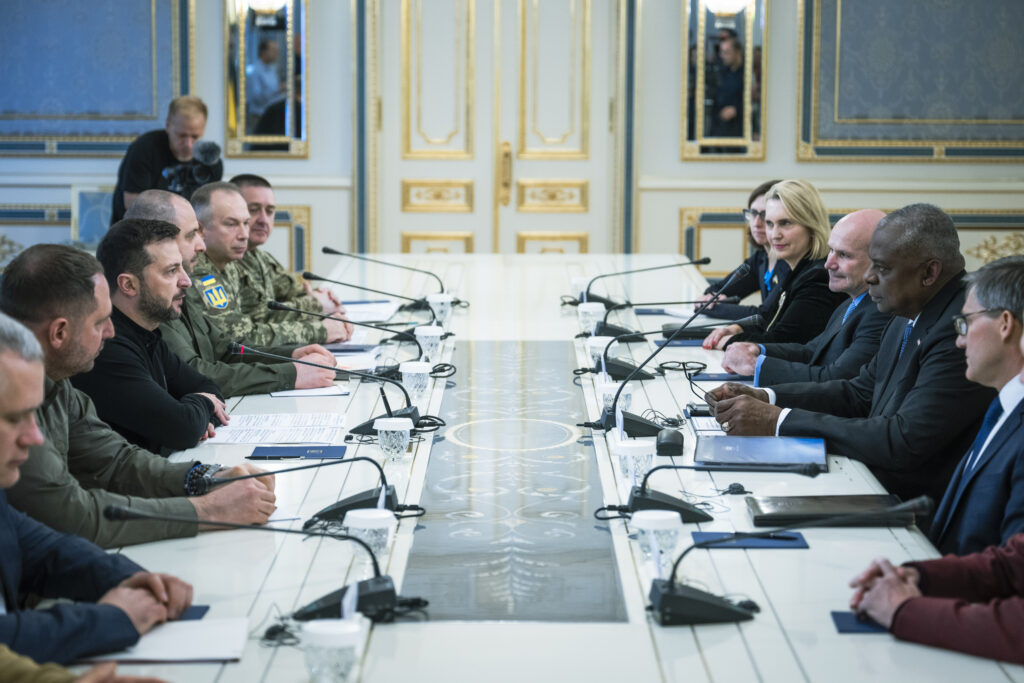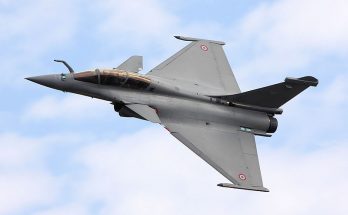A snapshot of recent news from sources around the world on the ongoing Russia-Ukraine war.

Political Developments
U.S. officials have confirmed that North Korea has sent around 3,000 troops to Russia earlier this month. The troops are currently training a three military sites in eastern Russia, but it’s unclear exactly how the North Korean soldiers will be used. Ukrainian military intelligence believes at least some of the North Korean deployment will focus on Russia’s Kursk region, where Ukraine continues to hold territory after an August offensive. South Korea raised the possibility of providing aid to Ukraine in the wake of North Korea’s actions.
Several U.S. lawmakers said the U.S. should consider taking “direct military action” if North Korean troops enter Ukraine.
As for what Pyongyang will receive in return from Moscow, Ukrainian military intelligence chief Kyrylo Budanov claimed to The Economist that Russia is assisting North Korea with its nuclear weapons program. (The report noted that there has otherwise been no corroboration for that claim.)
The Turkish government has taken steps to block the export to Russia of U.S.-made dual-use components, sources told the Financial Times this week. Ankara reportedly started blocking the exports under pressure from Washington, which warned of unspecified ‘consequences’ should Turkey allow the trade to continue.
Sergei Chemezov, head of Russian state arms conglomerate Rostec, bemoaned the impact of tight monetary policy on Russian industry, warning that high interest rates are weighing on profitability — including in the Russian defense sector — and could lead to bankruptcies if prolonged. The Russian central bank, grappling with a bout of inflation in the Russian economy, has taken its benchmark rate to 19.00 percent, with another hike expected to come this Friday.
Military Assistance to Ukraine
U.S. Secretary of Defense Lloyd Austin traveled to Ukraine to meet with Ukrainian leaders and reiterate the continued support of the U.S. in the war. While there, Austin announced a $400 million security assistance package. The U.S. has also agreed to provide Ukraine with $800 million for long-range drones that will be manufactured in Ukraine, according to Ukrainian President Volodymyr Zelenskyy.
Washington remains reluctant to authorize Ukraine to use U.S.-supplied weapons for strikes into Russia, however, with the U.S. intelligence community and Pentagon reportedly recommending against a change to the policy at this time.
The Congressional Research Service released a report that provides a summary of Department of Defense supplemental funding for Ukraine. To date, Congress has appropriated $174.2 billion in emergency supplemental funding for Ukraine, of which $110.7 billion (64%) has flowed through the DoD for weapons and other military activities.
Separately, a U.S. Inspector General report found that $1.1 billion in payments to Ukraine in 2022 following Russia’s invasion lacked proper documentation.
This week, the U.S. finalized its $20 billion share of a broader $50 billion loan to Ukraine backed by frozen Russian assets. The European Union also committed $20 billion, and another $10 billion is being split between Britain, Canada, and Japan. London, for its part, announced a £2.26 billion ($2.93 billion) military loan to Kyiv on October 22.
Canada announced a CAD64.8 million ($46.9 million) security assistance package for Ukraine that includes CAD27.3 million to procure for small arms and ammunition from Canadian industry. Another CAD20 million will be used for Canadian-made personal protective equipment and uniforms for female Ukrainian soldiers, CAD5 million for drones, up to CAD10.5 million for training, and up to CAD2 million to support cyber capabilities.
La Tribune reported that Paris plans to supply an initial batch of three Mirage 2000-5 combat jets to Ukraine in early 2025. The jets will be delivered with AASM Hammer air-launched munitions, as well as more SCALP missiles, according to the report.
Ukraine’s Palianytsia hybrid drone-missile program will receive funding from Lithuania. The Lithuanian government is providing EUR10 million for production. This financing will go to the Ukrainian manufacturer. The Palianytsia can perform deep strikes into Russia.
France is providing Ukraine with six Mirage 2000-5 combat aircraft. The Dassault-built aircraft are to arrive in Ukraine in early 2025, later than once planned. The Mirage 2000-5s provided to Ukraine will carry MICA air-to-air and SCALP stand-off strike missiles.
Battlefield Updates
Several Russian alcohol distilleries were reportedly hit by Ukrainian drones overnight on Monday.
Over 80 Russian drones were launched at Ukraine on Wednesday, as well as a Kh-31P missile. Ukraine said its air-defenses shot down 57 of the drones.
Russian and Ukrainian soldiers have been involved in heavy fighting for control of the town of Selydove in eastern Ukraine this week. Russia aims to capture the town to further its offensive on the city Pokrovsk, a logistics hub for the Ukrainian military.
Elsewhere along the front, a Ukrainian military spokesman confirmed on Wednesday that Russian forces continue to hold parts of Toretsk, north of Donetsk, but that the situation ‘has relatively stabilized’ in that section of the battlefield.
Russia has lost a medium-altitude, long-endurance (MALE) unmanned air vehicle (UAV) to Ukrainian ground fire. The Orion MALE UAV was conducting a reconnaissance mission over the Kursk region. The value of the Orion UAV is more than $5 million.
The Russian Army is facing a shortage of infantry in its war with Ukraine. To meet part of this shortfall, Moscow is transferring soldiers from its Strategic Missile Forces to the infantry. Personnel from the 1st Regiment of the Strategic Missile Forces are now fighting as infantry.
Russia fired 50 drones and four missiles in an operation against sites inside Ukraine. The nighttime air attack involved both ground-launched and air-launched weapons. The attack took place on October 23. This is the fourteenth recorded air attack on Kyiv, the Ukrainian capital, since the beginning of October.
For 50 years, Forecast International intelligence reports have been the aerospace and defense industry standard for accurate research, analysis, and projections. Our experienced analysts compile, evaluate, and present accurate data for decision makers. FI's market research reports offer concise analysis of individual programs and identify market opportunities. Each report includes a program overview, detailed statistics, recent developments and a competitive analysis, culminating in production forecasts spanning 10 or 15 years. Let our market intelligence reports be a key part of reducing uncertainties and mastering your specific market and its growth potential. Find out more at www.forecastinternational.com



